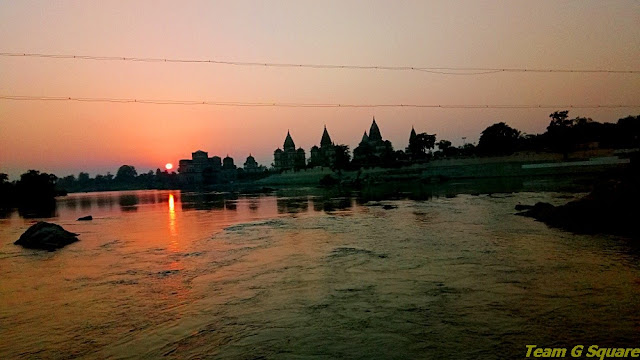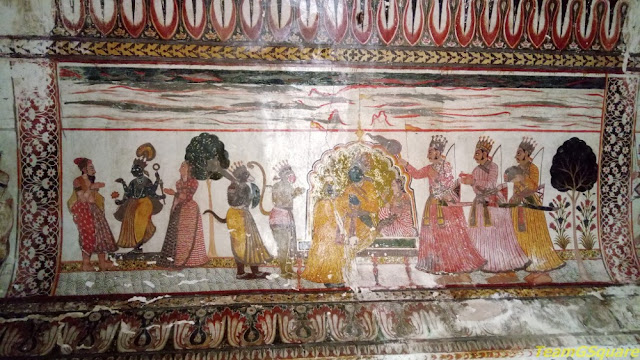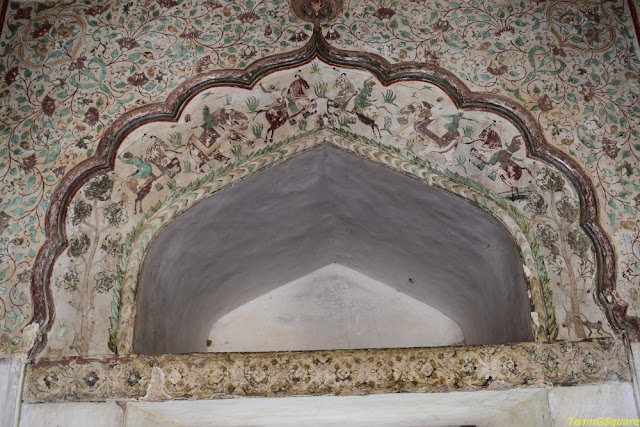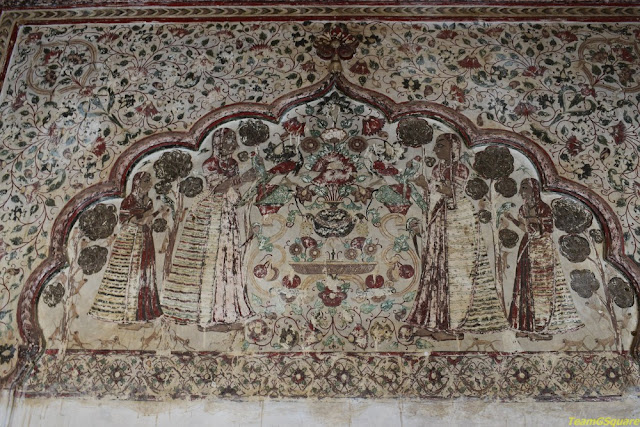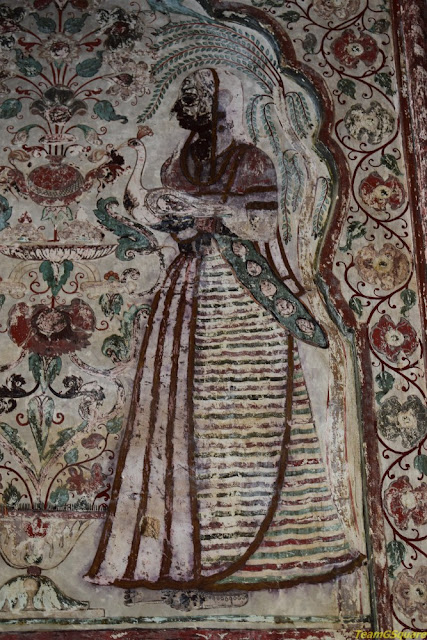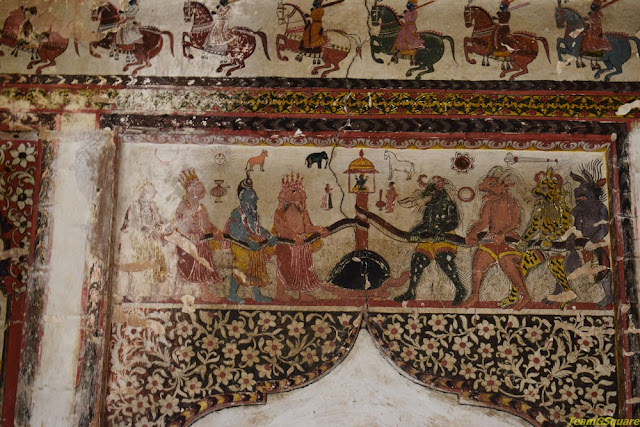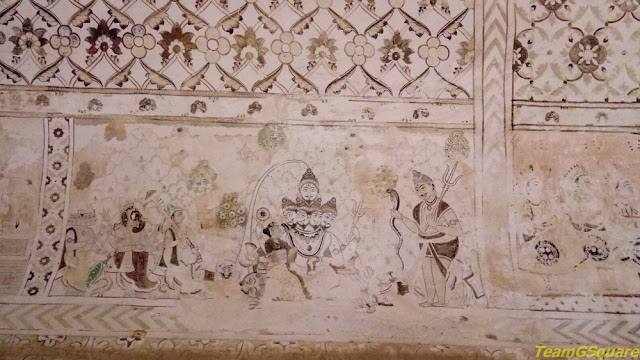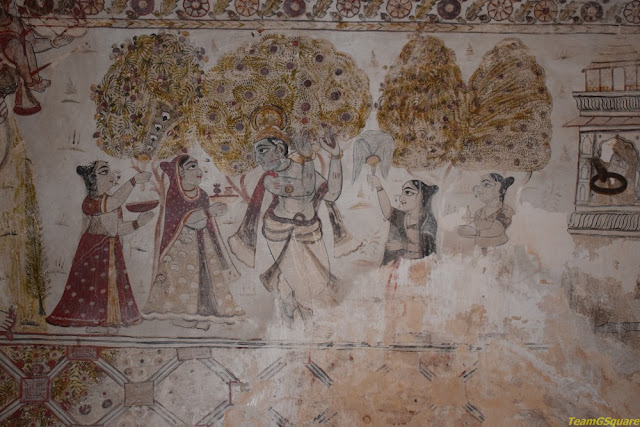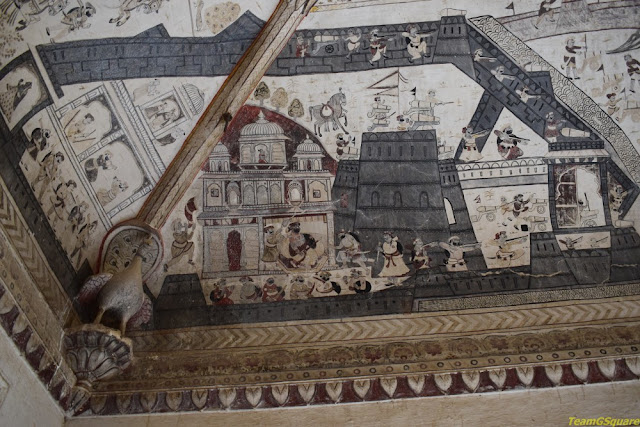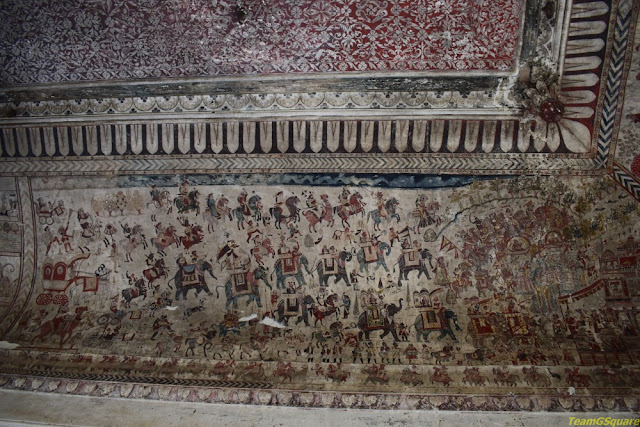Sri Amruteshwara temple at Amruthapura is one among the few of the most beautifully preserved Hoysala temples. As per the inscriptions found here, this temple was built around 1196 AD by Amruteshwara Dandanayaka, an army general of the Hoysala king Ballala II. This beautiful ekakuta temple houses a Shiva linga known as Amruteshwara after the person who built it. The temple consists of a garbhagriha, an antarala, a sabhamandapa/navaranga and mahasabhamandapa with three mukhamandapas. The mahasabhamandapa was added only later to the temple. The panels of the mukhamandapas carry carvings depicting stories from the Ramayana, Krishnacharita (adaptation of Bhagavata Purana) and Mahabharata. In this post we try to re-narrate the stories from the life of Lord Krishna, briefing each panel here. However, the last few panels seem to be missing or fully damaged, leaving the story incomplete. The context of the story is that Vasudeva and Devaki, parents of Lord Krishna, who were then prisoned by King Kamsa are about to welcome their eighth child (Krishna) in the prison. When Kamsa becomes aware of this situation, he plans to kill their eighth child as he would kill Kamsa as per the divine words heard from the sky. Realizing this, Vasudeva takes the new born Krishna to Nanda's house in Gokul and begs the family to save his son. In return, Vasudeva takes back Yashoda's daughter to the prison undetected.
Panel 1. Demon King Kamsa's Darbar - King Kamsa's guards inform him about Yashoda's labor pain in the prison, due to deliver her eighth child (Krishna) who would kill him.
 |
| Kamsa's Darbar |
Panel 2. Devaki's Labor Pain - Devaki, lying in a chamber is attended by a female helper providing assistance and support during the birth of her eighth child and guards guarding the chamber.
 |
| Devaki's Labor Pain |
Panel 3. Vasudeva bows to Donkey - This refers to a story when Lord
Krishna was born and Vasudeva carries him in a basket outside the
prison. He sees a donkey braying, indicating a god omen. The scene depicts Vasudeva praying with folded hands to a donkey in order to silence it and keep from awakening the prison guards. The moral also
probably refers to the old proverb, "To get one's work done, one has to
prostrate even before a donkey ".
 |
| "To get one's work done, one has to
prostrate even before a donkey " |
Panel 4. Vasudeva crossing River Yamuna with new born Krishna - Vasudeva carrying Krishna and crossing River Yamuna swarming with fishes and tortoises accompanied by men with swords and shields. This depiction is quite surprising and unique due the presence of guards with Vasudeva, as it is believed that Krishna is carried out from the prison in extreme secrecy.
 |
| Vasudeva crossing River Yamuna with new born Krishna |
Panel 5. Baby Krishna being welcomed at Gokul - Gopikas and Gopis at Gokul extending a warm and grand welcome to Vasudeva and the new born Krishna. Also seen accompanying them are musicians with flute, drums and tambour and cows led by a cowherd.
 |
| Baby Krishna being welcomed at Gokul |
Panel 6. Vasudeva handing over Lord Krishna to Yashoda - Yashoda receives Baby Krishna from Vasudeva in the presence of cows and calves, which adds more significance to this description.
 |
| Vasudeva handing over Lord Krishna to Yashoda |
Panel 7. Kamsa trying to kill Devaki's eighth child - Kamsa is seen lifting Devaki's new born in order to kill it after the babies have been exchanged. The female child, who originally is Yashoda's daughter appears as Durgi and escapes Kamsa's cruel intent. Though this depiction appears fourth in the sequence on the mukhamandapa panel, the sequence described here is in accordance with the original story.
 |
| Kamsa trying to kill Devaki's eighth child |
Panel 8. Krishna's Cradling Ceremony - Baby Krishna is being placed in a cradle suspended by ropes amidst gopikas and cows. A calf is also seen drinking milk from its mother.
 |
| Baby Krishna's Cradling Ceremony |
Panel 9. Sakatabhanga - Baby Krishna is seen in a cradle below a cart and kicking at it, thus killing the demon Sakatasura (cart-demon) who had taken the shelter of the cart and tried to kill Krishna.
 |
| Lord Krishna killing Demon Sakatasura (Cart Demon) |
Panel 10. Putanavadha - Putana tries
to breastfeed Baby Krishna with poisoned milk in order to kill him, but
Krishna remains unaffected by the poison and sucks out her life through
her breasts.
 |
| Lord Krishna Killing Putana |
Panel 11. Krishna being scolded by Yashoda - Yashoda is seen scolding Baby Krishna amidst gopikas for Putana's incident.
 |
| Lord Krishna being scolded by Yashoda |
Panel 12. Krishna killing Bakasura (Stork-demon) - Krishna enters the beak of a giant stork who is actually the demon Bakasura and while the bird swallows him, it is forced to spew him out after which Krishna grabs its beak and breaks it into two, thus killing it. The scene of Krishna holding the bird's beak is depicted in the panel.
 |
| Lord Krishna Killing Bakasura (Stork Demon) |
Panel 13. Krishna killing Vatsasura (Calf-demon) - Krishna holding the hind legs of the demon Vatsasura who appears disguised as a calf and enters the crowd of calves with an intent of killing Krishna and Balarama. On learning this, Krishna swings and hurls the demon, thus killing him and throws him atop kapittha (wood-apple) trees.
 |
| Lord Krishna Killing Vatsasura (Calf Demon) |
Panel 14. Krishna fighting cocks.
 |
| Lord Krishna Killing Bird Demon |
Panel 15. Deliverance of Nalakuvara and Manigriva by Krishna - Krishna, who is tied to a mortar by a rope by Yashoda tries to unrope himself and tries to pass in between the two trees while the mortar gets stuck. He tries to pull with all his strength and in doing so, uproots the trees causing them to fall down. Out of these trees appear Nalakuvara and Manigriva, who were cursed by the sage Narada into becoming twin Arjuna trees. Krishna thus liberates them.
 |
| Lord Krishna Uprooting Twin Arjuna Trees |
Panel 16. Krishna being scolded - Krishna eating dirt is being scolded by Yashoda, who beholds the universe in his mouth.
 |
| Yashoda Beholds the Universe in Lord Krishna's Mouth |
Panel 17. Krishna stealing Butter - Krishna sneaks in to steal butter from the pot being churned by a gopika, who seems unaware of this mischievous act.
 |
| Lord Krishna Stealing Butter |
Panel 18. Krishna looting Butter - Krishna climbs on to a mortar and loots butter from pots suspended from the ceiling and is watched by gopikas.
 |
| Lord Krishna Stealing Butter |
Panel 19. Kalingamardhana (Snake-demon) - Krishna subjugates snake demon Kaliya/Kalinga.
 |
| Lord Krishna Killing Kaliya |
Panel 20. Venugopala -This panel is a depiction of Krishna's Vrindavan showing that Krishna and the cows are in separable, which is why he is also known as Gopala or Govinda, the protector of cow. Venugopala literally means cowherd with a flute.
 |
| Lord Venugopala |
Panel 21. Govardhana-dharana - Krishna lifts Mount Govardhana as a shelter to rescue people and cattle of Vrindavan from the wrath of heavy rains caused by Indra.
 |
| Lord Krishna Lifting the Mount Govardhanagiri |
Panel 22. Aristasuravadha - Krishna kills the bull demon Aristasura who enters Vrindavana and causes destruction.
 |
| Lord Krishna Killing Aristasura (Bull Demon) |
Panel 23. Kesivadha - This panel depicts the destruction of demon Kesi who entered Vrindavana and attempted to kill Krishna in the form of a horse. Krishna forced his arm into the horse's mouth and killed it.
 |
| Lord Krishna Killing Kesi ( Horse Demon) |
Panel 24. Akrura taking Krishna and Balarama across river Yamuna - This panel depicts Akrura, the minister of Kamsa escorting Krishna and Balarama to Mathura.
 |
| Akrura taking Krishna and Balarama across river Yamuna |
There are a few panels which are missing towards the end, which probably depicted stories of Krishna in the court of Kamsa and eventually the killing of Kamsa. The childhood deeds of Krishna end with the death of Kamsa.
 |
| Missing Panels |
References:
1. Book on 'Iconography of Vishnu' by Kalpana Desai.
2. Book on 'Epic Narratives in the Hoysala Temples' by Kirsti Evans.
3.'Annual Report of the Mysore Archaeological Department -1931'
Related Posts:
1.
Top 100 must visit lesser known temples of Karnataka
2.
Sri Mallikarjuna Swamy Temple, Hirenallur






